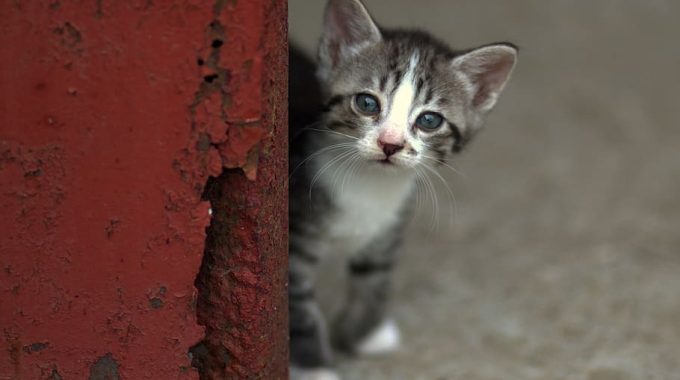How to Tame a Fearful Cat (Part 1)
Living with a fearful cat that rebuffs your requests for affection and interaction is complex and disappointing. The cat’s prey drive, temperament, and experiences determine its emotional state and reactions. The fearful cat’s discomfort can be alleviated by implementing behaviors adapted to his shyness or fears.
The tips to follow in this first part of our article will cover the causes of a fearful cat.
Causes of a fearful cat

The domestic cat is a prey and behaves as such:
it hides in open or unknown terrain to observe while being safe: it is on the alert, ready to flee;
if it is surprised, it is immediately on the defensive with an aggressive reaction.
The environment in which the cat finds itself and the threats it perceives there will trigger instinctive survival behaviors.
In domestic cats, it is common that in a litter, an individual is genetically predisposed to shyness, whether it is his temperament. As in humans, in cats, there are many personalities:
extroverts and introverts;
adventurous and cautious;
confident and anxious.
Finally, experiences alter these predispositions, and they either strengthen or weaken. Certain incidents that take place during sensitive periods leave their mark more:
The cat has a sensitive period for socialization with living beings from the fifth to the eighth week.
A kitten that has had good contact with many people during this period and beyond will probably be less fearful than a kitten that has not had this experience.
Instinctive behaviors can be specific and directed toward an identifiable object or situation. There is a scale of emotions ranging from simple caution to apprehension, fear, anxiety, and trauma. All result from an interaction between the cat’s temperament and its more or less happy experiences with the world in which it lives.
A fearful cat is a cat that feels its control over events slipping away. Its perception is initially biased by its location. When we adopt a cat, we place it in an unknown place, which creates stress. This anxiety will make him interpret all benevolent proposals as threatening.
The advantage of adopting a kitten or a young cat is that it is programmed in play mode:
Play generates a positive emotion that facilitates interactions.
The younger the kitten, the more playful it will be towards a fellow cat that responds to its requests.
After the eighth week, the kitten begins to explore and play with objects.
A poorly socialized kitten will not necessarily see you as a playmate at this age. Certain behaviors must be observed, which we’ll discuss below.
If you adopt an adult cat who is fearful, hiding under furniture at the first visit or is startled and running away at the slightest event, you’ll have to help him overcome his fears.

Good to know: one should not speculate on the past of the fearful cat; it biases the observations necessary for the therapeutic approach. A fearful cat has rarely been abused, and it is more a matter of inexperience that makes it defensive. Behavioral modification techniques require a careful approach to the problem. Fortunately, it is possible to help a shy animal without knowing anything about its past.
Follow us in part 2 for more information on:
– Fearful cat: measures to put in place upon arrival
– How to tame a fearful cat?
Hope this post has provided you with the information you were looking for. Remember to jot down a few words in the comments below. Also, let us know if you would like to read about a particular topic on pet behavior. We promise to get to you quickly!

